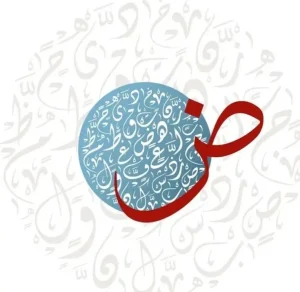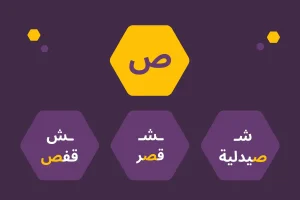
Unique Facts about Arabic
When you decide to learn a new language, it is essential to learn the factual details that distinguish it from other languages.
This can help you understand how the language is constructed and can facilitate your learning journey.
Additionally, it provides a deeper understanding of the culture surrounding the people who speak the language.
Getting acquainted with the unique features of a language will also keep you piqued and further enhance your interest and motivation to acquire it.
In this blog, we will share with you 11 facts about the Arabic language that will surprise you and make you want to learn it
Arabic is Diglossic
First, Arabic is diglossic, which means it has two different spoken versions. There is classical Arabic, which is also called فصحى Fusha. It is the language you read in books and hear in main news outlets.
The other version is called عامية ‘Aamiyah, which is colloquial everyday Arabic. Aamiyah has many different forms called لهجات Lahajat or “Dialects”.
For example, “I want” in Fusha is “أُرِيْدُ” /Urīdu/. For example, in Aamiyah, there are no less than 7 different dialectical variations, from the Levantine expression “بّدي” /baddi/ to Egyptian “عاوز” /’Aawiz/ and Saudi “أبغى” /Abgha/.
The Language of the Holy Quran

One of the most distinctive features of Arabic is that it is the language of the Quran, the Holy Book of Islam. The Quran is the literal word of God (Allah) in Islam, and its original Arabic text holds divine authenticity. As a result, Arabic is not just a means of communication but also an integral part of Islamic faith and theology.
Moreover, in Islam, unlike in some other religions, gaining knowledge and understanding of the Quran are individual obligations. They are prerequisites to understanding its teachings, which makes learning Arabic a fundamental step that precedes practicing the religion and performing its key rituals.
Additionally, the Quran is regarded as miraculous in its meticulous use of Arabic. As a result, it has become a guide not only for verifying the nuances of Arabic grammar but also for learning the intricate meanings and implications of different Arabic structures.
It has a Root-Based Structure
The Arabic language has a unique root system. Words in Arabic are derived from a root that consists of three letters. You can derive other words by adding vowels and consonants to the root. The derived words are usually related in meaning to the root word. It is a special feature in Arabic that makes it a rich and highly expressive language.
The root system of Arabic allows for the creation of numerous words from a single base. For instance, the root “كتب” (k-t-b), generally related to writing, can generate words like “كتاب” (kitāb, meaning book), “مكتبة” (maktabah, meaning library), and “كاتب” (kātib, meaning writer).
From the root “س ل م” (s-l-m), which conveys the idea of peace or submission, we get “سلام” (salām, meaning peace), “إسلام” (Islām, meaning submission), and “مسلم” (Muslim, meaning one who submits).
Its Non-Linear Script
Arabic script flows beautifully from right to left, setting it apart from many other languages. This non-linear writing adds a unique aesthetic to the written word, where letters change shape depending on their position in a word.
Each letter in the Arabic alphabet can be written in four ways, depending on where the letter is placed in a word. These four locations are also known as initial, medial, final, and isolated. Take the following example:
The letter ب Baa’: Initial form: بـ /Medial form: ـبـ /Final form: ـب /Isolated form: ب
Its Unique Calligraphy and Art Forms

Another unique feature of Arabic is its beautiful calligraphy. This artistic handwriting is celebrated for its beauty and elegance. It is connected to religion, art, and architecture.
The most common styles are Naskh and Kufic. Arabic calligraphy has been used to decorate mosques, palaces, and manuscripts.
Loughat Al-Dhad (The Language of "Dhad")
“Dhad” (ض) is a sound unique to Arabic, often celebrated as the language’s essence. There’s no exact equivalent in any other language, making it a distinctive feature of Arabic phonetics. This characteristic has earned Arabic the nickname لُغَةُ الضَّاد “Loughat Al-Dhad,” highlighting the language’s unique sound palette. It’s a point of pride and a marker of the rich auditory landscape Arabic offers to speakers and learners alike.

Arabic Influence on Other Languages
Arabic has left its mark on many languages around the globe, from Spanish to Swahili, Persian to Urdu. Words like سكّر “sugar” (sukkar), قَهْوَة “coffee” (qahwa), and مَجَلَّة “magazine” (majalla) have Arabic roots. This influence traces back to the Middle Ages and the spread of science, mathematics, astronomy, and philosophy by Arab scholars. Arabic’s legacy in global culture and languages underscores its historical significance and enduring impact.
Read more about the influence of Arabic language on English words in this article:
English Words That Come From Arabic
Gender-specific Language
Nouns and adjectives in Arabic have gender, and they must agree in gender and number with the nouns they describe. This extends to the verb forms as well. For example: “A hardworking student” can be translated to “طالب مجتهد” (male) or “طالبة مجتهدة” (female)
Vowels and Diacritics
Short vowels in Arabic are not usually written but are indicated by marks above or below the letters. These diacritics are essential for proper pronunciation and meaning, especially in the Quran. Check the following examples where a change in diacritical marks produces a new word with a different meaning: عِلْم /’ilm/ means “Knowledge” or “Science”, whereas عَلَم /’alam/ means “flag”.
Rich Vocabulary and Synonyms
Arabic has a vast lexicon, particularly in classical and literary texts. It’s famous for having many synonyms for a single concept. For instance, Arabic has many words for ‘love’, each conveying a different stage or aspect of the feeling. For example: غرام /gharam/ means “deep attachment”, عشق /ishq/ means “passionate love”, وِدّ /widd/ means “sincere affection”, هوى /Hawa/ means “desire”, التّيم /Attaym/ means “bewitchment”.
The Use of the Dual Form
Arabic has a grammatical dual form in addition to singular and plural, which refers to two of something, like two books, two people, etc. In Arabic, we say كتابان /Kitaban/ to mean “two” books” and شجرتان /Shajratan/ to mean “two trees” etc.
Final Word
In conclusion, learning Arabic opens up a world full of history, culture, and unique language features. Its sophisticated rules, wide range of vocabulary, and special writing system reflect the rich background and traditions it comes from. Arabic is not just a language with challenging grammar rules; it connects us to a long history of knowledge, religion, and art.
Learning Arabic allows you to discover a culture that has added much to the world, from science to literature. It’s more than learning words; it’s about understanding a new way of seeing things.
As you start to learn Arabic, you’re not just picking up a new language but also getting closer to a big, interesting world.
To help you take the first step, we recommend you download our special learning app.
This app will help you take the first step in learning Arabic and boost your Arabic language learning journey, with a myriad of useful exercises that suit all skill levels.
The app also contains quick lessons prepared by our language expert, daily scenarios rich with Arabic culture, and live statistics for easy and insightful progress tracking.
Don’t miss out on this rich resource to propel your language-learning experience! Create an account today and join thousands of Arabic learners!
I wish you the best of luck in learning Arabic and see you in future blogs!




